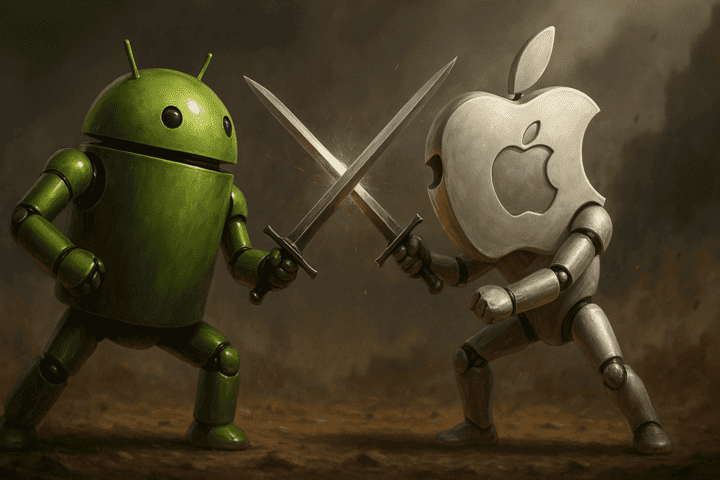Android vs iOS in 2025: A Comprehensive Comparison

Table of Contents
Introduction
In 2025, the two dominant mobile operating systems—Android and iOS—have both evolved significantly. From deeper AI integration to fresh design paradigms, each platform brings unique strengths to the table. Whether you’re a power user, developer, or casual consumer, understanding the latest advances can help you choose the right ecosystem for your needs.
Market Share & Adoption
- Global Reach
Android continues to lead with approximately 74% market share, thanks to its wide device range across price points. - Premium Segment
iOS holds over 55% share in the high-end market (₹50,000+ devices), driven by strong brand loyalty and regular hardware refreshes.
User Experience & UI Design
- Material You 2.0 (Android)
Expanded dynamic theming adapts accent colors based on wallpaper and time of day. New “Adaptive Shapes” let developers craft bespoke UI components. - Fluid Interfaces (iOS)
iOS 18’s refreshed iconography and interactive widgets deliver smooth, context-aware transitions—especially on iPadOS where multitasking has been overhauled.
Latest Platform Features
Android Highlights
- On-Device AI Assistant
Pixel-exclusive “Aurora” assistant processes prompts offline for privacy-sensitive tasks. - Cross-Device Casting
Seamless switch between phone, tablet, and Chromebook without re-authentication.
iOS Highlights
- Siri Copilot
AI-driven suggestions baked directly into Mail, Notes, and Safari—offering real-time summarization and action prompts. - Live Activities 2.0
Expanded support for interactive notifications, from food delivery tracking to home-automations controls on the Lock Screen.
Hardware Ecosystem
- Android Variety
From foldable phones with under-display cameras to gaming-optimized flagships with 540Hz touch sampling, Android’s hardware diversity addresses every niche. - Apple Consistency
A streamlined lineup—iPhone 16 series, SE 4th gen, and the Vision Pro headset—ensures tight OS-hardware integration and uniform update schedules.
App Ecosystem & Developer Tools
- Google Play & Beyond
Android’s open sideloading options coexist with a revamped Play Store security scanner. Jetpack Compose 2.0 accelerates UI development. - App Store & Xcode 16.5
iOS developers benefit from Swift 6’s enhanced concurrency model and MetalFX for next-gen graphics.
Privacy & Security
- Android Privacy Dashboard
Real-time microphone, camera, and location indicators; granular permission toggles for each background process. - iOS App Privacy Reports
Detailed logs show cross-app tracking attempts and data-access patterns, all viewable in Settings under “Privacy Health.”
Customization & Personalization
- Android
Full-theme engine, lock-screen widgets, and custom icon packs. Rootless modules let enthusiasts tweak animations system-wide. - iOS
Home Screen color filters, Focus Mode automations, and Shortcuts Gallery templates streamline workflows without compromising security.
Update Cadence & Support
- Android
Core OS features land via Google Play system updates; major Android releases now target a 12-month cycle with three years of OS updates guaranteed on select devices. - iOS
Consistent annual major updates (iOS 18.x → 19 in September 2025) with five years of security patches even on entry-level hardware.
Conclusion
Both Android and iOS in 2025 offer robust platforms tailored to different priorities. Android shines with its customization, hardware variety, and open ecosystem. iOS excels in seamless integration, polished UI, and consistent long-term support. Your choice hinges on whether you value flexibility and choice, or tight hardware-software synergy and uniformity.
Resources
Android: Official Android Site
iOS: Apple iOS Overview